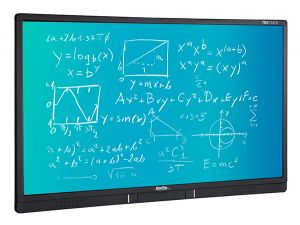2018’s Top Two Educational Tech Trends: Interaction and Intuition
Technology makes a lot of things possible—but who does it make new possibilities for?
Increasingly, those who design new technological tools for education return to this question. What good is an interactive classroom if no one, neither the students nor the teachers, know how to interact with it? Even the most capable and complex tools are no good if the people who need them most can’t intuitively understand how to use them.
Taking a closer look at the way developing education technologies focus on intuition and interaction in 2018 reminds us, once again, of the importance of the user in good technology and good design. Thinking about interaction and intuition can help your organization get on trend and on track in 2018 by remembering the crucial center of the technological experience: the people who use it.
The “Users” of Education Technology
 In the education space, the “user” can be a busy school administrator, a newly graduated instructor, a tenured professor, an energetic first-year college student, or a kindergartener walking nervously into their first real classroom. While each of these users all belong under a wide umbrella of “educational technologies” that might assist them in their educational and professional goals, each of these users also has unique needs that can’t be erased or ignored by the tools they use.
In the education space, the “user” can be a busy school administrator, a newly graduated instructor, a tenured professor, an energetic first-year college student, or a kindergartener walking nervously into their first real classroom. While each of these users all belong under a wide umbrella of “educational technologies” that might assist them in their educational and professional goals, each of these users also has unique needs that can’t be erased or ignored by the tools they use.
By keeping the importance of interaction and intuition behind education tech design, you’re more likely to address the nuanced needs of your audience and find solutions that connect them to the experiences they want and need.
Trend #1: Interaction
“Interaction” is a pesky word. We use it all the time, but often forget its meaning. It doesn’t just mean connection or discussion between two parties. It means reciprocal action or influence. This reciprocity is crucial. It establishes an equality and understanding between groups or individuals and that bond lasts well beyond the time an “interactive tool” is in use.
Consider one of the top technological trends for 2018: the Interactive Display.
Interactive displays boost and champion one the most crucial components of the classroom environment: collaborative learning and open communication. Rather than allowing participants to sit back and doze off during long-distance classes or lectures, interactive displays like the those from Newline Interactive (pictured below) allow students and instructors to share voice and video along with data and real-time annotation.
You can take notes on a digital whiteboard that feels like you’re actually writing. You can share notes across devices and systems without glitches. You can even store meeting files locally. This is interaction driven by audience awareness. Here, the experience is designed to be comfortable and familiar, even as it takes place in an exciting and newly interactive setting.
 In education, interactive displays—with that crucial focus on reciprocity—bring students and teachers together. By establishing credibility and communication between groups, interactive displays make learning more possible. This kind of interaction makes intuition more possible, too.
In education, interactive displays—with that crucial focus on reciprocity—bring students and teachers together. By establishing credibility and communication between groups, interactive displays make learning more possible. This kind of interaction makes intuition more possible, too.
Trend #2: Intuition
We often think of it as a gut-reaction or a feeling rather than a conscious thought process. And that’s exactly right. Intuition is the ability to understand something immediately, without the need for conscious reasoning.
It’d be easy to think that one type of response is better than the other—that intuition is better than conscious reasoning because it’s such a strong and impulsive feeling. But these two modes of thinking have to work together. In fact, the learning process depends on their interaction and connection to inspire new ideas.
Conscious reasoning helps us strip back assumptions to critically analyze and understand problems in depth. Intuition sparks new ideas and guides curiosity. Educational technologies can help students understand and navigate the differences between intuitively understanding a new concept or theory and consciously reasoning through new ideas or arguments.
How? Consider the space where most of these “student users” are: their smartphones. Connecting educational tools to the technologies they’re already comfortable with—through an educational app, for example—helps students experience intuition and push themselves forward into more conscious reasoning or critical thinking processes. When these apps can be tied to their interactive classroom spaces, students will learn to deftly navigate their own comfort with intuitive technologies and the discomfort that comes from wrestling with difficult concepts or ideas. The educational app, then, can be a tool that not only teaches content but also informs the processes and patterns students use to tackle their biggest questions.
Interaction and intuition could be resolutions that get your team on track for the new year. To help your team get there, check out our interactive displays here from Newline Interactive.


